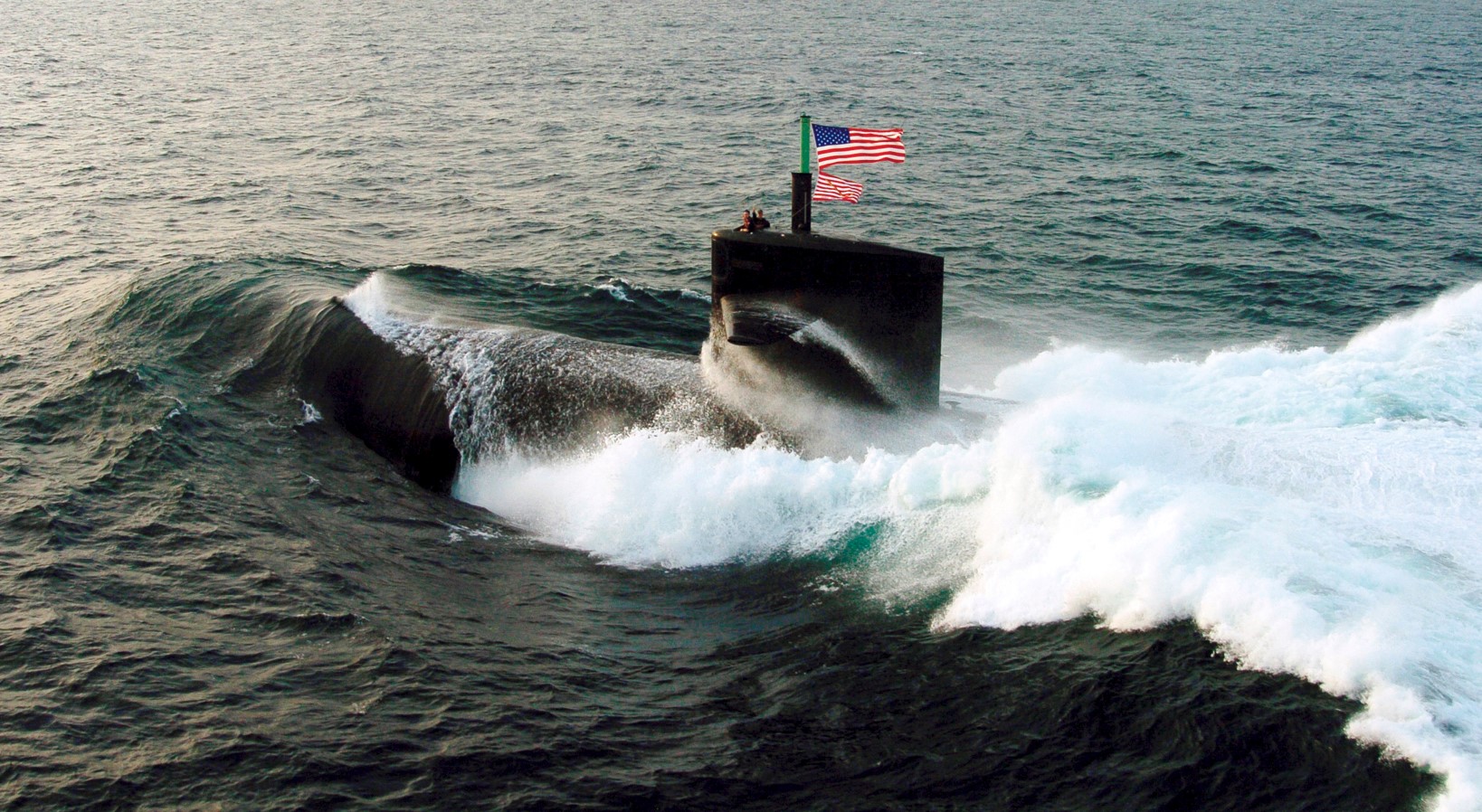A Salute to Submarines: Submariners share their experiences in celebration of National Submarine Day
Submarines are like spaceships. They capture our imaginations, taking us to other worlds, unseen and mysterious. From Captain Nemo to the Beatle’s Yellow Submarine to The Hunt for Red October, submarines have been part of our national culture and lore. We celebrate them on April 11th, National Submarine Day, a day set aside to honor the first United States’ acquisition of a submarine and its vital role in our national defense.
For every modern submarine, there are crews of 50 to 160 intrepid men and women, all with stories to tell of their service under the sea. Submariners are a special breed, highly trained, and uniquely qualified. No matter how honorable or brave, not just anyone is suited for life in a submarine.
All for One and One for All
“First in submarines, you know every member of the crew. It is common for us to banter with each other, but make no mistake, we are brothers,” said Bruce Wayman who served aboard the USS Sperry and the USS Ray, SS(N)653. “We are willing to sacrifice ourselves for the others. Trust, integrity, dependability, honesty, and unity of purpose are paramount qualities of a sub sailor.”
“By the second patrol, everyone is required to have earned their Dolphins [Submarine Warfare Insignia],” said Chris Larsen, who served aboard the USS Woodrow Wilson, SSBN 624, as a sonar technician. “Your Dolphins tells the rest of the crew that a submariner can be trusted with their lives. Everyone is a first responder on a submarine.”
Earning your Dolphins is no small feat.
Jon Scholl, an engineer who served as a Midshipman on the USS Olympia, SSN 717, explains, “The breast insignia you are authorized to wear have two dolphin fish visible in them (not dolphins, but dolphin fish!) But earning them is a long process that can take up to about two years (for officers). A candidate must learn and demonstrate knowledge through written and spoken examination, about every ship system. We learn how to operate the ship on the surface and submerged at the Officer of the Deck (underway) and Duty Officer (in port).
“In a nutshell, when any sailor, officer or enlisted, has dolphins, you can trust that they have the highest levels of knowledge about the ship, and the highest levels of integrity and trustworthiness to operate it under normal and crisis situations.”
Submariners are an elite group
Talent hits a target no one else can hit; Genius hits a target no one else can see.
Arthur Schopenhauer
Additionally, superior intelligence is a hallmark of the submariner. “Having served both in the surface and sub-surface navy, I can tell you from direct observation, the submariner is brighter than an average sailor. I don’t know what today’s standards for nuclear-trained submariners are, but when I entered the program, you were required to be highly intelligent, i.e., 118 or higher IQ,” said Wayman.
While Scholl acknowledges the unique qualities required for submarine service, he is quick to add, “All Navy sailors are elite! I think the [hazardous pay] comes because serving in a submarine is an extra hardship, and fewer want that lifestyle. But everyone will claim their area of service is the most elite […] and they are right!”
However, Scholl admits submarine service is distinct from all other roles in the Navy. He quips, “Most notably, we intentionally sink our boats!”
Nerves of Steel
Of all the branches of the forces there is none which shows more devotion and faces grimmer perils than the submariners.
Winston Churchill
The hazardous nature of serving in a 560-foot windowless boat of steel deep in the ocean is self-evident. One in five submariners lost their lives in the line of duty in WWII.
Submariners are said to be in the “Silent Service” which both describes the requisite silence of their underwater operations and their reticence to talk about operational details of their missions — ever.
“Our mission was to remain undetected, listening all the time,” says Larson who served during the Cold War. “Any sound in a sub can expose your position. It keeps you challenged.”
“The most terrifying experience while serving on the USS Ray SS(N)653 was an unintentional vertical dive that occurred in rough seas during sea trial recertification after having a shipyard overhaul,” said Wayman, who initially considered submarine service less dangerous than his Vietnam War assignment as an engineman/rear gunner on a swift boat on the Mekong River where life expectancy in a firefight was about five minutes.
Wayman continues, “One moment the boat was horizontal, the next moment the ship was plunging nose down heading for crush depth. The reactor shut down and the main engines tripped out and the ballast tanks were unable to hold enough air to stop or slow our descent. I’m thankful the plainsmen were experienced enough to position the plains, such that we leveled out short of implosion at crush depth.”
“I can’t really discuss anything operational,” said Scholl, a graduate of the US Naval Academy. “But occasionally things got sporty during training drills. Once we were doing engineering drills where we purposefully shut down the reactor, generally safe and normal. Now, as part of ship operations, we pump water on and off the ship to maintain neutral buoyancy. When the ship slows or stops, you quickly discover how right, or wrong, your estimates are. As the ship slowed without propulsion, we discovered that we were very heavy. Very. Rarely do we have to restore power very quickly out of need, but I did that day.”
A Lonely Vigil
Submarine service can be a lonely vigil for both the submariner and his family.
“The worst part of submarine service for me was the isolation from the world,” said Larsen. “Yes, we’d get news clips and family grams, but they are allowed to only say so much. All negative information was edited before you received your mail. It was important to maintain morale, for the crew to remain positive. But it was hard not knowing what was really happening with your family back home when you are separated for many months at a time.”
They also serve who only stand and wait.
John Milton
The wives and families of submariners contribute greatly to the success of a submariner.
“No one has done more to prevent conflict — no one has made a greater sacrifice for the cause for Peace — than you, America’s proud missile submarine family. You stand tall among our —heroes of the Cold War,” Colin Powell.
“[Bruce] was at sea 75% of the year,” said Joanne Wayman, Bruce’s wife of nearly 54 years. “Life as a Navy wife could be very hard, but it also had its positives. I had to be independent and not afraid to stay alone. We grew stronger as a couple because we knew how precious our time together was. You definitely didn’t want to spend your time fighting or sulking. I had to manage the budget carefully. I tried to keep our life on the same path when Bruce was gone as it was when he was home, especially with the children. I thought I managed fairly well but I told Bruce I didn’t think I could survive another enlistment.”
Karen Scholl, Jon Scholl’s wife of almost 30 years, agrees. “Long periods of separation were difficult, and most of the plumbing disasters and medical emergencies with children came when Jon was gone! But we had a very active and supportive ‘wives club’ that we could lean on, and periods of separation were always followed by happy reunions! As an added benefit, Hawaii wasn’t a bad place to be during those difficult times!”
Submarine Service Plants Seeds of Faith and Love of Country
“[My testimony of Christ] came years later, but I did however experience some religious insights while cruising well below sea level. One experience is sacred to me [and confirmed] my belief in the Holy Ghost and set the stage for me to embrace the gospel of Jesus Christ and The Church of Jesus Christ of Latter-day Saints.”
Jon Scholl was an adult convert to The Church of Jesus Christ of Latter-day Saints. However, maintaining Church practices is a challenge in a submarine.
“There were two other LDS members on board, and when our schedules intersected, we were able to have short sabbath services,” said Scholl, who has served as an ecclesiastical leader for The Church of Jesus Christ of Latter-day Saints in the Prosper, Texas area. “I was able to attend the temple in Tokyo and made a point to stay connected to the Church when I could. Probably most important was the inner commitment to live my faith as a Latter-day Saint, which was both respected and supported by my shipmates.”
“My ship operations and locations are classified. But they are also less important than the intense pride in our nation as we visited foreign countries and saw the opportunities and blessings we take for granted in America. I recall being the duty officer in a western pacific port, raising the flag in the morning while the national anthem played. It was very emotional. I still get emotional over the blessings of our country when I hear our anthem.”
There is a new episode of the Lone Star Latter-day Saint Podcast featuring Jon Scholl. He shares what it’s like to live and work underwater, on board a submarine.
Jani Nielsen is the Assistant Director of Communication over Media for the DFW area of The Church of Jesus Christ of Latter-day Saints, a freelance journalist, and co-author of The Burying Man.









